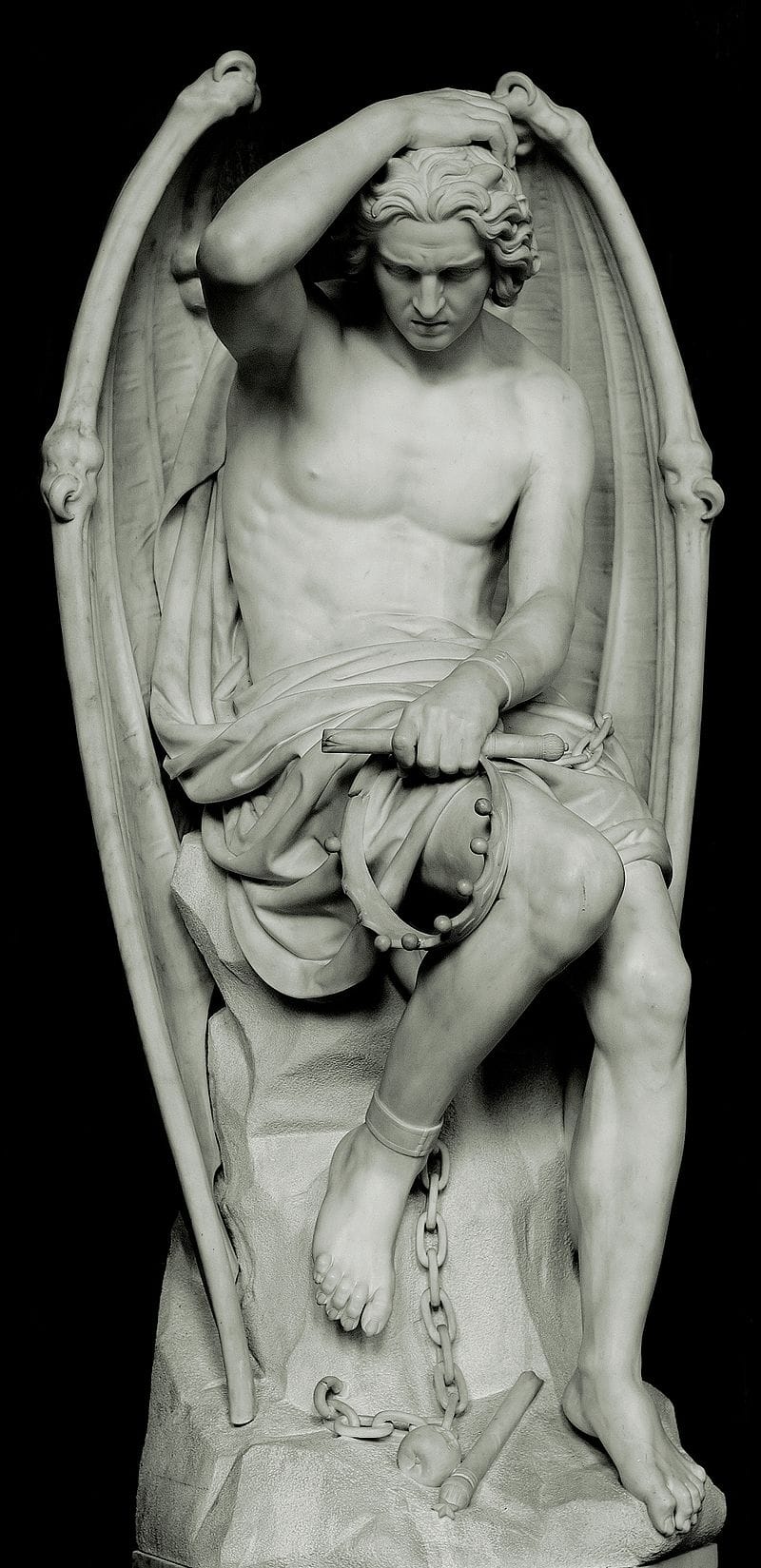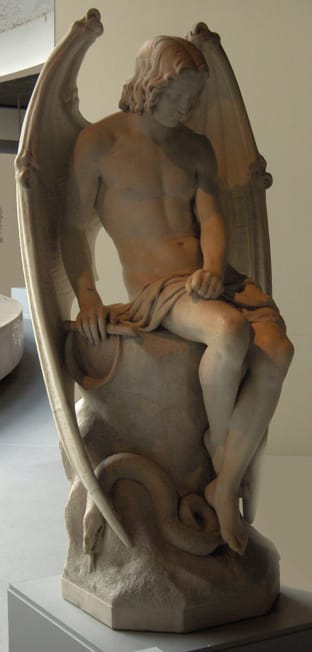Satan, Lucifer and The Devil
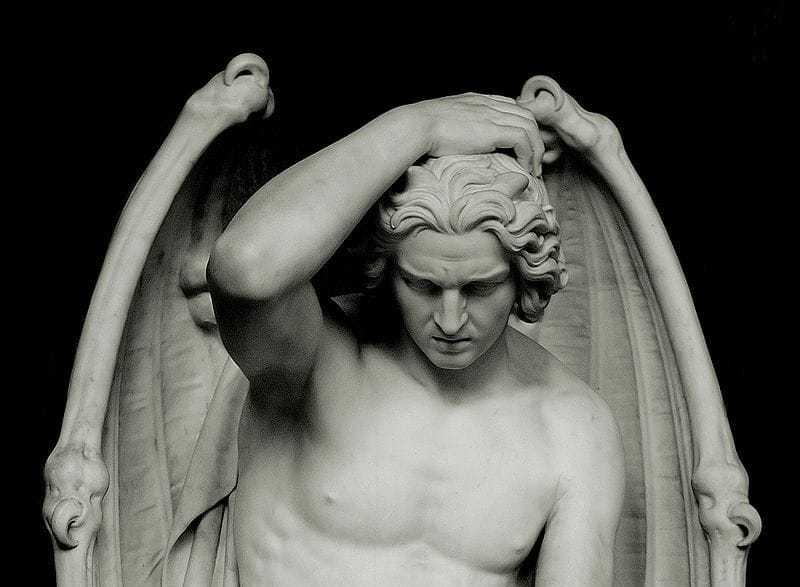
Satan does not appear by name in Genesis at all, unless we identify him with the Snake (as many do), or we rely on mis-translations of the original Hebrew into Greek (the Septuagint). For example, in The Book of Job, chapters 1-2, what is often now translated as "Satan" is simply "adversary" in the Hebrew. Put a capital letter at the front of a word and you've created a character! Satan is not in the Talmud either but the Qur’an and the New Testament give him a prominent role and many associate him with the Dragon in Revelation. You also can find him in Zechariah 3.
Therefore, despite the profusion of terms and mistranslations, Satan is still the one with the most stature. He starts out working for God and evolves into an adversary, perhaps under the influence of Persian thinking. But, we don't really have a firm idea of what "He" looked like.
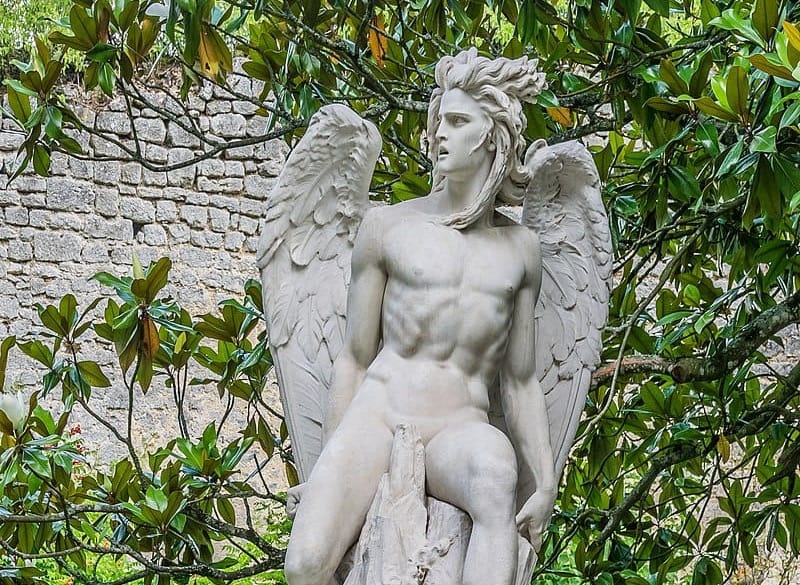
By the medieval era the name Lucifer (light-bearer) had been added to the mix. Although Lucifer is mentioned by name in Isaiah 14: "How art thou fallen from heaven, O Lucifer, son of the morning!" this is a misunderstanding. Lucifer is a Latin word and when St. Jerome used it, he was referring to the morning star in Roman astronomy (what we now call Venus). Yet, by the early medieval period when the Holy Grail stories and the Cathars were popular, Lucifer had come to be associated with Satan, since there was something very liberating about picturing him as a beautiful fallen angel (a falling star). By the Romantic era (Blake, Byron), Lucifer had become sexy, like the Constantino Corti statue above and the later Alberto Martini painting shown below.
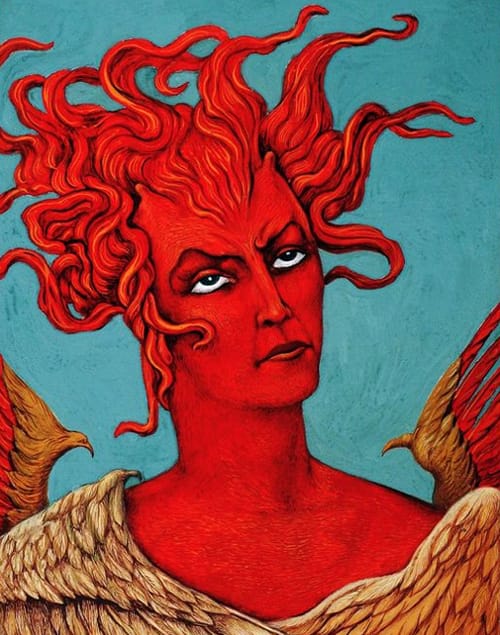
The other images shown here are of marble statues of Lucifer as a fallen angel. The top one has various names including L'ange du mal (Angel of Evil), full version shown below. It replaced an even sexier coy version of that name by the sculptor's brother, which was apparently distracting the girls in church, and it had to go (it's shown at bottom).
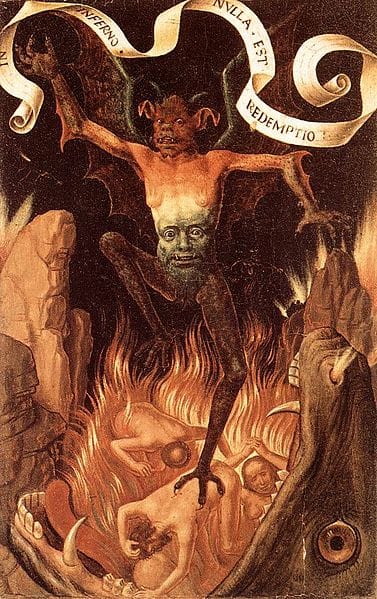
Then there is The Devil (more here), from the Greek diabolos. He appears in the New Testament but the references seem to be synonymous with demons and they lack the stature associated with Satan or Lucifer. The term Devil only catches on in the medieval period as an alternative name for Satan, when depictions became more grotesque, as in the Hans Memling painting above. After this, devils became "The Devil"... And Mephistopheles.
